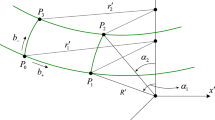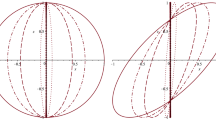Abstract
IT is the purpose of this note to direct attention to the importance of a recent experiment1 on the constancy, with time, of the frequency of light from an emitting atom, from the point of view of the general relativity theory, or any other theory of space-time structure. In the experiment in question, light is sent over two paths of different length and made to interfere at the point of observation. The number of waves retardation was measured as a function of time with the result that a measured retardation of 1·4 ± 1·1 × 10–5 fringes per day was observed for a path-length of 582,000 wave-lengths. The conclusion is that either a frequency increase of
This is a preview of subscription content, access via your institution
Access options
Subscribe to this journal
Receive 51 print issues and online access
$199.00 per year
only $3.90 per issue
Buy this article
- Purchase on Springer Link
- Instant access to full article PDF
Prices may be subject to local taxes which are calculated during checkout
Similar content being viewed by others
References
Kennedy, “The Velocity of Light”, NATURE, 130, 277, Aug. 20, 1932.
McVittie, “Dirac's Equation in General Relativity”, Mon. Not. Roy. Astro. Soc., 92, 868–877, Oct. 1932.
Mason, “A Newtonian Gravitational System and the Expanding Universe”, Phil. Mag., Ser. 7, 14, 386, Sept., 1932.
Author information
Authors and Affiliations
Rights and permissions
About this article
Cite this article
MASON, W. Constancy of Light Frequencies and the General Relativity Principle. Nature 132, 100–101 (1933). https://doi.org/10.1038/132100a0
Issue Date:
DOI: https://doi.org/10.1038/132100a0
Comments
By submitting a comment you agree to abide by our Terms and Community Guidelines. If you find something abusive or that does not comply with our terms or guidelines please flag it as inappropriate.



